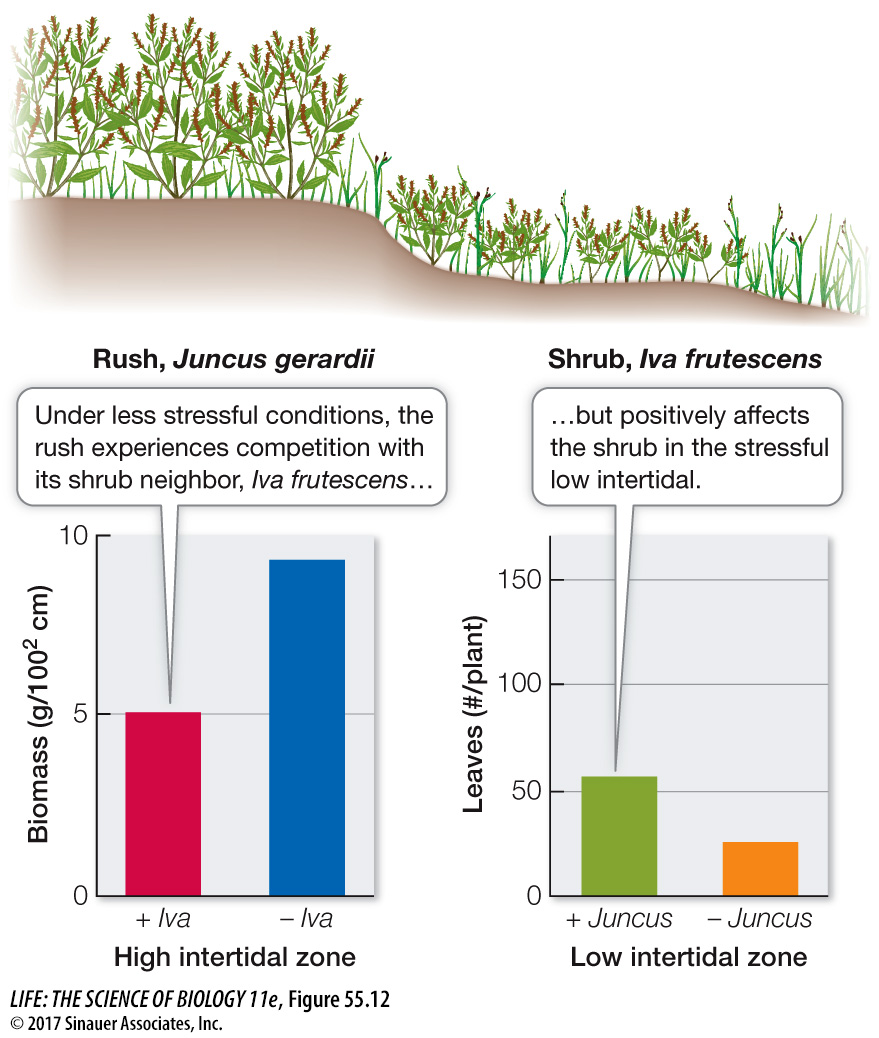The physical environment, disturbance, and predation can each alter the outcome of competition
The outcome of competition among species can be changed by a variety of factors, including the influence of the physical environment and processes such as disturbance and predation, which may injure or kill some individuals. These factors can cause a weakening or even a reversal of competitive outcomes between species if they negatively affect the competitively dominant species. By reducing the growth or survival of the competitively superior species, the physical environment, disturbance, or predation can allow the competitively inferior species a chance to acquire limiting resources, gain a foothold, and potentially increase its population size.
In an example from a Rhode Island salt marsh, Mark Bertness and colleague showed how competition could be altered by the effect of daily tides on the interaction between a rush, Juncus gerardii, and a shrub, Iva frutescens. Through a series of Juncus and Iva removal experiments in each tidal zone, the researchers found that in the relatively physically benign high intertidal, Iva is the competitive dominant, shading Juncus and causing it to have lower biomass (Figure 55.12). However in the low intertidal, where salinity and waterlogging from the tides are greater, Iva cannot compete with Juncus because it is physiologically intolerant of the physical conditions in this zone. In fact, the competitive relationship is turned into a positive one, in which Iva is dependent on Juncus to survive in the low intertidal. We’ll discuss the role of positive interactions in the next section, but it is clear from examples such as this that the outcomes of species interactions depend on the particular circumstances, or context, under which they occur.
